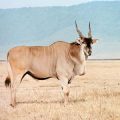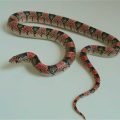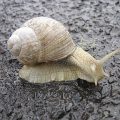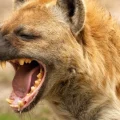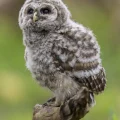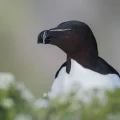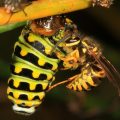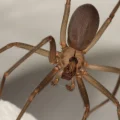The monocled cobra, scientifically known as Naja kaouthia, is a venomous snake species native to South and Southeast Asia. This intriguing serpent can be found in various countries such as India, China, Vietnam, Cambodia, Malaysia, Bangladesh, Bhutan, Myanmar, Laos, Nepal, and Thailand.
In terms of physical appearance, the monocled cobra is a rather formidable creature. It can grow to an adult size ranging from 48 to 75 inches, making it one of the larger cobra species. With an average lifespan of 13 to 20 years, this species can be found dwelling in a diverse range of natural habitats including grasslands, scrublands, swamps, forests, and even farmlands.
One interesting aspect of the monocled cobra is its venomous capabilities. It is known to have one of the highest fatality rates in Thailand due to snake venom poisoning. The average venom yield per bite is approximately 263 mg in dry weight. Envenomation caused by this snake typically presents with extensive local necrosis, or tissue death, and systemic manifestations to a lesser degree.
While the monocled cobra’s venom poses a significant threat, it is important to approach these creatures with caution and respect rather than fear. Understanding their natural habitat and behavior can help minimize the risk of encounters. It is crucial to remember that these snakes play a vital role in maintaining the ecosystem’s balance.
Breeding enthusiasts have also produced fascinating variations of the monocled cobra through selective breeding. The red-eyed, leucistic monocled cobra, also known as the ‘blizzard cobra,’ is a striking example of this. This unique specimen is the result of combining the genes of a leucistic cobra (white with dark-blue eyes) and a sunset cobra (T-positive orange with normal eye color).
The monocled cobra is a captivating snake species that occupies a significant presence in South and Southeast Asia. Its venomous nature and potential for harm make it a creature to be respected and treated with caution. However, it is important to appreciate the role it plays in its natural habitat and the intriguing variations that can be produced through selective breeding.
How Venomous Is A Monocled Cobra?
The monocled cobra is known to be highly venomous. It has an average venom yield per bite of approximately 263 mg dry weight, which is quite potent. In fact, it is responsible for causing the highest fatality due to snake venom poisoning in Thailand.
When a person is envenomated by a monocled cobra, the effects can be quite severe. The venom of this snake is known to cause extensive local necrosis, meaning it can cause significant tissue damage at the site of the bite. This can lead to the death of cells and surrounding tissue, which can be extremely dangerous.
In addition to the local necrosis, envenomation by a monocled cobra can also lead to systemic manifestations. This means that the venom can affect other parts of the body, causing symptoms and complications beyond just the site of the bite. However, compared to the local necrosis, the systemic manifestations are usually less severe.
To summarize, the monocled cobra is a highly venomous snake, with an average venom yield per bite of approximately 263 mg dry weight. It is known to cause extensive local necrosis and can also lead to systemic manifestations, although these are typically less severe.

How Long Do Monocled Cobras Live?
Monocled cobras, scientifically known as Naja kaouthia, have an average lifespan ranging from 13 to 20 years. These venomous snakes are native to South and Southeast Asia, where they can be found in various habitats such as grasslands, scrublands, swamps, forests, and farmlands.
Here are some key points about the lifespan of monocled cobras:
– Adult monocled cobras can grow to a length of 48 to 75 inches.
– In the wild, the lifespan of these cobras is influenced by a variety of factors including predation, availability of food, and habitat conditions.
– Monocled cobras primarily feed on small mammals, birds, lizards, and other snakes.
– Like other cobras, the monocled cobra is capable of delivering a venomous bite, which can be lethal to humans if left untreated.
– Due to their venomous nature, monocled cobras are considered dangerous and should be approached with caution.
It’s important to note that the lifespan of monocled cobras can vary depending on factors such as captivity, access to proper nutrition, and overall health. Therefore, the average lifespan provided is based on observations in their natural habitat.
Monocled cobras have an average lifespan of 13 to 20 years, and their size can range from 48 to 75 inches. These venomous snakes are found in South and Southeast Asia and inhabit a variety of habitats.
Is Monocled Cobra Found In India?
The monocled cobra (Naja kaouthia) is found in India. This venomous snake species is native to South Asia and Southeast Asia, and it can be found in various regions of India. The monocled cobra can be found in different states of India, including West Bengal, Assam, Arunachal Pradesh, Manipur, Meghalaya, Nagaland, Mizoram, Tripura, and parts of Uttar Pradesh and Bihar. It is important to note that the distribution of the monocled cobra within India may vary, and it is mainly found in the northeastern and eastern parts of the country.
Here are some key points about the distribution of the monocled cobra in India:
1. The monocled cobra is commonly found in the states of West Bengal and Assam.
2. It is also distributed in the northeastern states of Arunachal Pradesh, Manipur, Meghalaya, Nagaland, and Mizoram.
3. In addition, the snake can be found in Tripura, which is another northeastern state of India.
4. Parts of Uttar Pradesh and Bihar also have populations of the monocled cobra.
5. The snake prefers habitats such as forests, grasslands, agricultural areas, and human settlements.
It is worth noting that while the monocled cobra is found in India, it is important to exercise caution and avoid any interactions with this venomous snake species, as it can be dangerous if provoked.
What Is A Leucistic Monocled Cobra?
A leucistic monocled cobra is a unique and visually stunning snake. It is a result of the combination of two specific genetic traits: leucism and the monocled cobra’s natural color variation.
Leucism is a genetic condition that causes a partial or complete loss of pigmentation in an animal’s skin, scales, feathers, or fur. In the case of a leucistic monocled cobra, this condition results in a snake that is predominantly white, with little to no coloration. This lack of pigmentation gives the snake an overall pale appearance.
The monocled cobra, also known as Naja kaouthia, is a venomous snake species native to Southeast Asia. It is called “monocled” due to the distinctive circular marking on the back of its hood, which resembles an eye. Normally, monocled cobras exhibit varying shades of brown or yellow, with darker patterns on their scales.
When a leucistic gene (which causes the loss of pigmentation) and a sunset gene (which introduces orange coloration) combine in the same individual, it results in the production of a leucistic monocled cobra, also known as a “blizzard cobra.” These snakes have a striking appearance, as they exhibit a white or pale background coloration combined with orange patches or hues.
One notable feature of the leucistic monocled cobra is its eyes. Instead of the typical dark color seen in most cobras, these snakes have red or pink eyes, which further adds to their unique and captivating appearance.
A leucistic monocled cobra is a snake that showcases the genetic traits of leucism and the natural color variation of the monocled cobra species. It exhibits a predominantly white or pale coloration, often with orange patches, and is characterized by its red or pink eyes. This beautiful and rare snake is truly a stunning example of nature’s genetic diversity.
Conclusion
The monocled cobra, also known as the monocellate cobra or Indian spitting cobra, is a venomous snake species native to South and Southeast Asia. With its wide distribution across countries like India, China, Vietnam, and Thailand, this snake is well-adapted to various habitats including grasslands, scrublands, swamps, forests, and farmlands.
The adult monocled cobra can reach an impressive length of 48 to 75 inches and has an average lifespan of 13 to 20 years. However, its venom is what sets it apart and makes it a particularly dangerous snake. With an average venom yield of approximately 263 mg dry weight per bite, the monocled cobra is responsible for causing the highest fatality rate due to snake venom poisoning in Thailand.
Envenomation by the monocled cobra primarily presents with extensive local necrosis, meaning it can cause severe tissue damage at the site of the bite. Additionally, systemic manifestations may occur to a lesser degree, affecting various organs and bodily functions.
One fascinating variation of the monocled cobra is the red-eyed, leucistic monocled cobra, also known as the “blizzard cobra.” This unique snake is produced when the genes from a leucistic individual, characterized by its white color and dark-blue eyes, and a sunset individual, with T-positive orange coloration and normal eye color, combine in the same animal. The result is a striking snake with an eye-catching appearance.
The monocled cobra is a snake species that commands respect and caution due to its potent venom and potential for causing significant harm. Its adaptability to different habitats and its distribution across South and Southeast Asia make it an important part of the region’s ecosystem.


